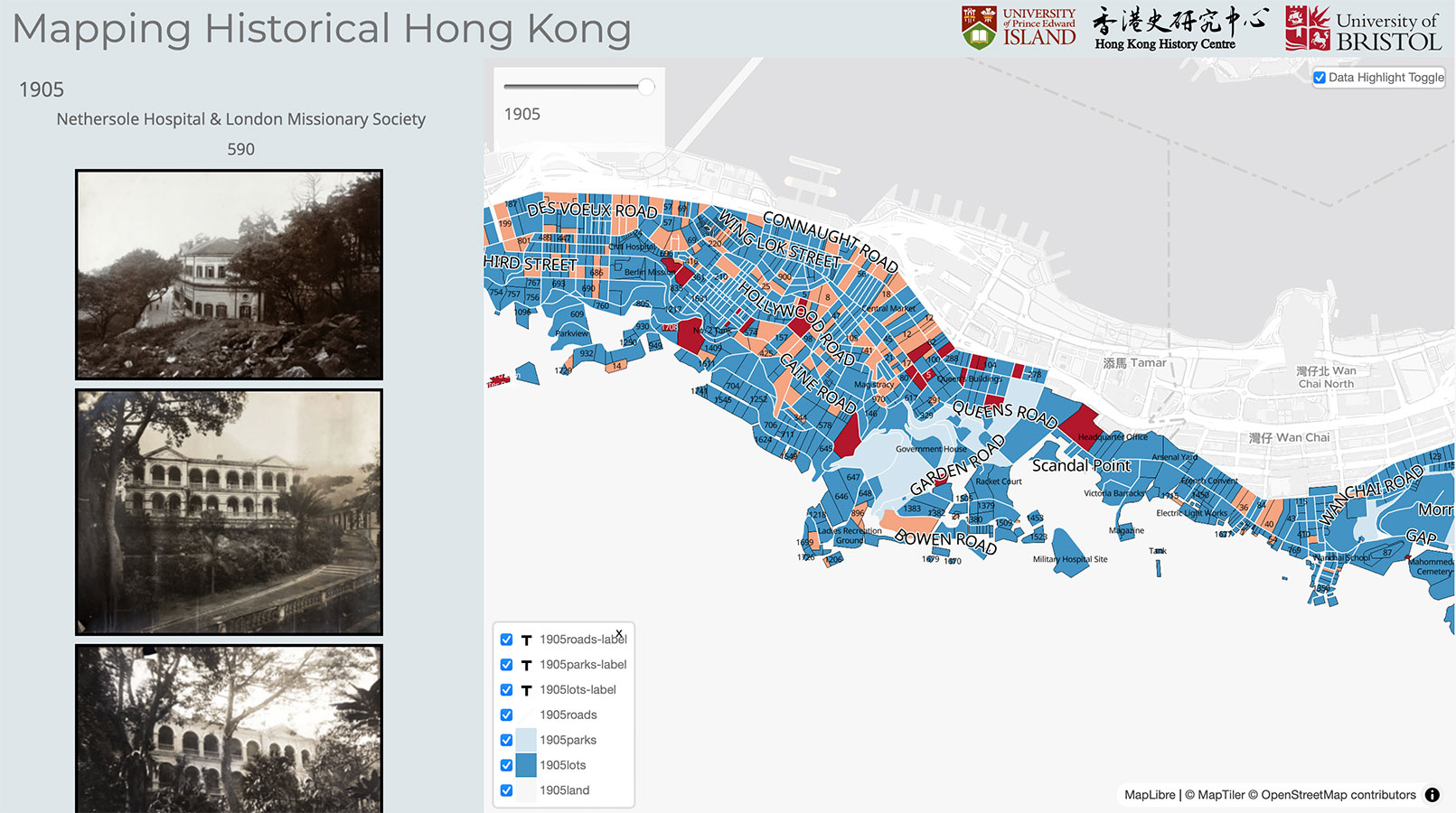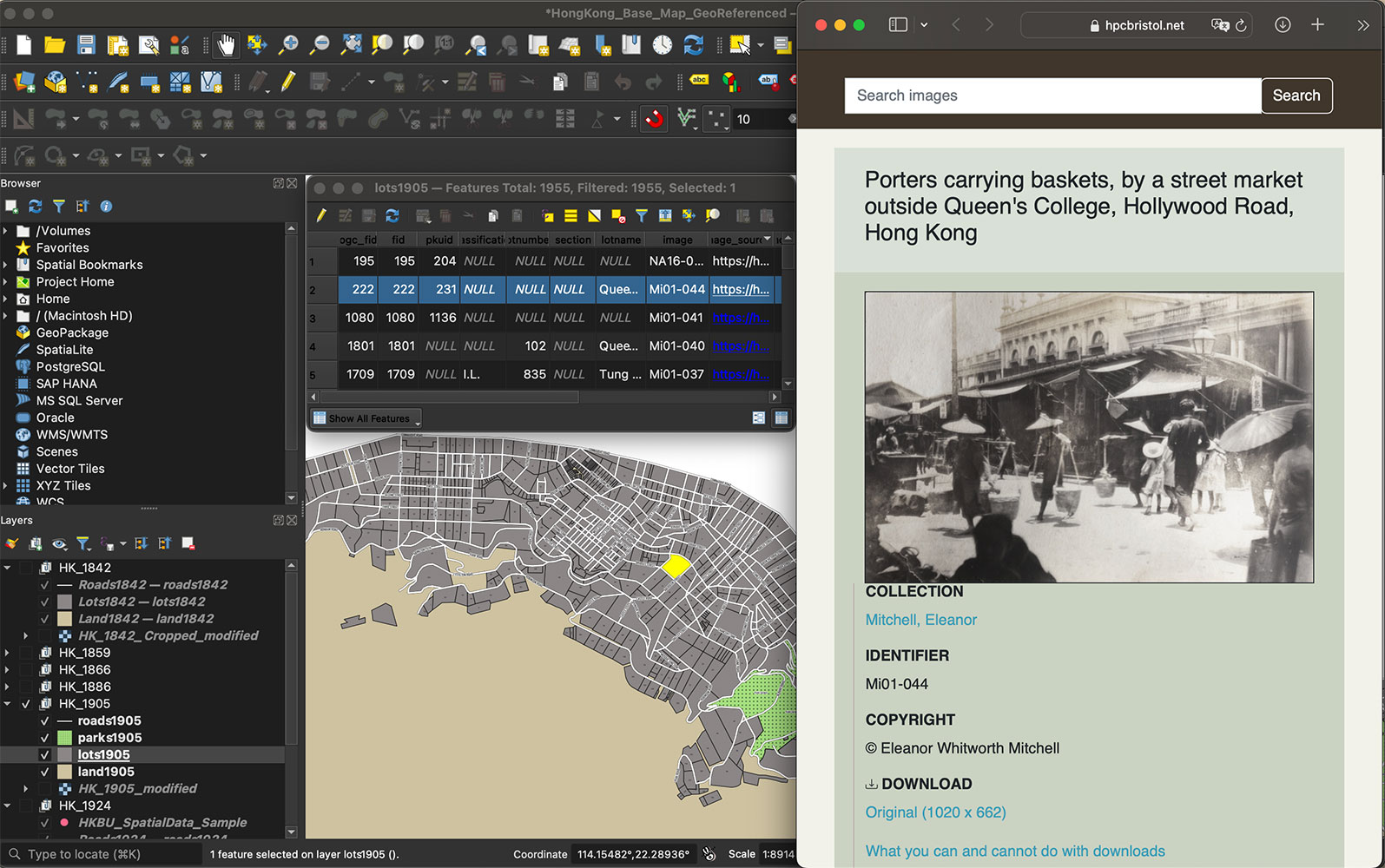Revisiting the Past and Reimagining the Future of Hong Kong History through Digital Methods
Whether a meeting place, in-between space, imperial periphery, nexus, node, point-of-transit, ‘Gateway to Asia’, or since 2001, ‘Asia’s World City’, vocabularies of connectivity and mobility abound in Hong Kong studies. With such a lexicon it is little wonder that the topic of Hong Kong has surged in popularity amongst global and imperial historians, scholars of colonialism and decolonisation, and, in recent years, digital humanists. My own early experiment with digital humanities, the Mapping Sino-Foreign Networks (MSFN), project reflected my attempts to grapple with the transitory, mobile, and integrated nature of Hong Kong society, while my more recent work – more parochial in focus – has in its own way been made possible by Hong Kong’s ongoing global entanglements.
My turn to digital humanities evolved from the challenge of conceptualising the scope and scale of the social, commercial, and political networks that 19th-century migrants to Hong Kong cultivated and maintained. Migrants to Colonial Hong Kong found a space divided according to colonial hierarchies. Such hierarchies were made more explicit due to the colonial society’s diversity, as imperial subjects from across the British world and extra-imperial adventurers converged on the port. The contents of the colonial archive often reproduce whitewashed narratives of an idealised segregation, but in reality, a more integrated society reflected pragmatic considerations. Multiracial and multinational networks blossomed through business, domestic services, and social and civic institutions – the exigencies of everyday life.
This was also a transitory population. People moved on through the treaty ports, the Nanyang region, to Japan and across the Pacific, and further to Europe and the Americas. Chinese compradors, servants, and cooks followed the expansion of foreign firms, while thousands of labourers from Hong Kong and the surrounding provinces were contracted for infrastructural and agricultural work in India, Africa, the Caribbean, and North America. Foreign merchants and colonial officials returned home following brief and sometimes lucrative tenures. And thousands more reached Hong Kong as part of the colonial project.
Digital humanities helps make sense of this confusion and mitigate the dangers of erasure that traditional archival research struggles to overcome. The experimental MSFN project, for example, uses network analysis and graphing to map how the 19th-century community that emerged in Hong Kong evolved and shifted over time and space. MSFN reinforces the premise that Hong Kong brought together a diverse cast of actors, but also emphasises the weight that the relationships established in the colony held as people relocated and spread these networks globally. The project’s hybrid quantitative and qualitative approach to recreating these networks leveraged digital tools to revisit the colonial archive, provide novel insights into network composition, and challenge narratives of colonial segregation.

Fig. 1: Thomas M. Larkin and Mark McLaren, Screenshot, Mapping Historical Hong Kong, https://markmclaren.github.io/mapping-historical-hong-kong/ (retrieved 29 May 2025).
Digital tools are also well positioned to meet the challenges facing the future of Hong Kong studies. The shifting political climate and perennial concerns over archival access and preservation have embedded urban heritage projects, especially, with renewed importance. The Mapping Historical Hong Kong project (MHHK) was developed with such challenges in mind to explore the applications of digital tools for spatial and urban history and to support the global growth of Hong Kong studies and history initiatives [Fig. 1]. Aligned with the Hong Kong-based Spatial History Project, MHHK uses GIS to visualise Hong Kong’s urban growth between 1841 and 1997. The project collates and spatially organises historical data and archival resources to provide researchers and the public with a streamlined resource for exploring Hong Kong’s history [Fig. 2]. Both a tool for analysis and a finding aid for a globally diffuse range of archival materials, MHHK represents the collaborative and integrative future of Hong Kong studies.

Fig. 2: Thomas M. Larkin, Screenshot, Mapping Historical Hong Kong, https://markmclaren.github.io/mapping-historical-hong-kong/ (retrieved 29 May 2025).
If MSFN was meant to emphasize the ways Hong Kong was integral to the creation of, and then was integrated into, globe-spanning networks, MHHK brings the narrative full circle by capitalising on those very same networks. As these projects demonstrate, digital methods provide the tools for thinking about Hong Kong’s global entanglements and reflect the global future of the field, helping scholars the world over find new and robust ways to work together.
I write this from my own little island (Prince Edward) nestled in the Gulf of St Lawrence, Canada. The islands and territories of Hong Kong are some 12,379 km distant, but nonetheless present in my research and teaching and accessible through academic partnership. This is in no small part thanks to the ways the digital age and digital humanities have reshaped inter-institutional collaboration. Resource sharing, the emergence of new archives, more flexible forms of funding, and a wealth of unique expertise have made it not just possible but fruitful to work on Hong Kong history from abroad. In its own peculiar but fitting way, Hong Kong once again becomes a conduit for the flow of people, goods, and ideas, facilitating international exchange, the sharing of resources, collaborative research, and transnational scholarly discourse and community.
Thomas M. Larkin is Assistant Professor of History at the University of Prince Edward Island. Email: thomaslarkin@upei.ca